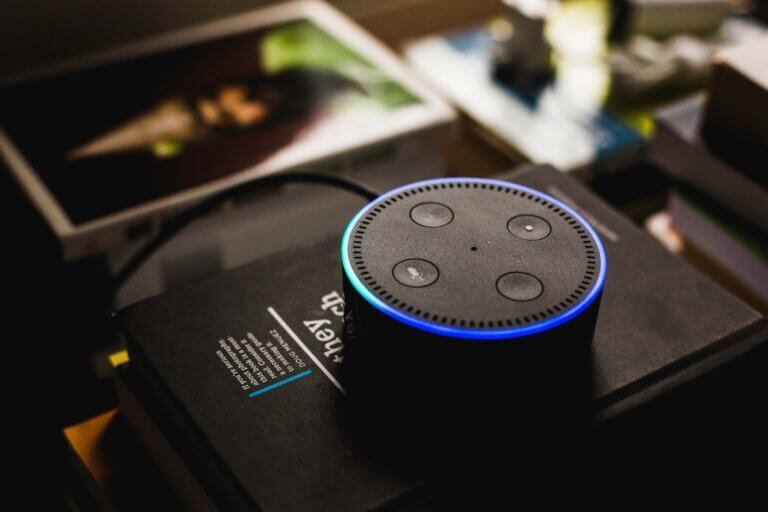
What Marketers Can Learn From CES’ Voice Tech Hits and Misses

Mike Herrick SVP of Technology

Share to my network
In this article
Categories
Book a meeting
Connect with our team of experts to discuss your conversion and loyalty goals, and how we can help you achieve them faster.
Get a demoSmart home innovation needs to land in the right context.
As expected, there was a ton of buzz about voice tech at CES this year, thanks to toilets, shower heads and trash cans you can talk to. There was even a robot that, if asked, pours you a beer.
It’s all about the smart home of the future, which will be reliant on AI. And the future is already upon us: Amazon announced before CES that 100 million Alexa-equipped devices have been sold. While mobile and screen experiences are not going anywhere, it’s an exciting time for the “internet of things,” especially considering how 5G-powered internet speed is arriving in U.S. cities.
Let’s look at a few of the branded hits and misses for CES’ voice-activated smart home reveals. There is something marketers can learn from each of them to help understand the future of not only technology but how consumers and brands should interact in the next decade.
Miss: Kohler’s Numi 2.0
This high-end commode, called Numi 2.0, has been around for about a decade. The latest version, which will be available in Q4, made waves in Vegas because it comes powered with Amazon Alexa and costs up to $8,000. The average cost of installing a toilet is $370, so this is quite expensive. The Kohler toilet allows you to speak to complete bathroom-going tasks such as flushing and comes with Alexa-powered speakers so you can verbally request music as if you were sitting on a Sonos. The manufacturer markets the toilet experience as “immersive.”
For the very rich, this fancy product may be appealing, but using the toilet isn’t one of the things everyday consumers are particularly angsty about. Speaking instead of flushing with the push of a finger isn’t going to move the needle for most folks’ personal happiness, so I’m calling this toilet a branding miss.
What Marketers Can Learn
I don’t typically have the time or inclination to listen to my favorite song while using the bathroom. More simply, this product is a good example that not every customer experience needs to be immersive. Technology is best used to aid consumers during truly defining moments.
Part hit, part miss: Moen’s U
This device is a conservationist’s dream because it allows you to time your showers and easily pause them. Each action limits your water usage, and you can also set the temperature in an automated fashion instead of twisting a pair of knobs back and forth, a first-world frustration most people can relate to. Now you can do all of these things with your voice. Called U by Moen, it costs $1,125, which may be low enough for enough consumers to make a marketplace impact.
There’s a problem, though: A display is a safer, simpler way to do all of those things in an automated fashion. What if voice AI dials up the wrong temperature? It maxes out at 120 degrees, which would be uncomfortable to most people—especially a toddler—for even a few seconds. Yet, Moen achieves a “part hit, part miss” here because even though the voice AI part of the equation is suspect, they at least thought about all of those things. The U by Moen offering comes with a small digital screen to handle all the tasks voice can take care of, and they are achievable via the brand’s mobile app as well.
What Marketers Can Learn
Give your customers options so they can feel empowered. Whether it’s water or brand messages, they want to have control over their experience by selecting preferences. If nothing else, direct-to-consumer challenger brands last year taught us that with their custom-minded subscription products. The same goes with publishers, which are increasingly giving subscribers options for how they are receiving content and interacting with journalism brands.
Hit: Capstone’s Smart Mirror
This interactive product hasn’t been priced yet, but its utilities look pretty amazing and offer the kind of experience people want. It’s voice-activated and offers all the touchscreen abilities of a large tablet. The Capstone Smart Mirror could be used in any room of the home but appears designed with the bathroom in mind.
There are myriad use cases. Enabled with Google Assistant, you can check email by speaking as you shave or do your hair. You can also get the weather report and watch YouTube videos. Called Smart Mirror, the product identifies the voices of up to six different household members, and it can switch between Google accounts and provide personalized and private results to each user. The wow factor makes Capstone’s tech an outright hit.
What Marketers Can Learn
Once again, you have to offer your customers choices. The fact that Capstone’s Smart Mirror melds various channels into a common experience—looking into a mirror—will be attractive to a huge set of luxury-minded consumers. While I have not interacted with the product yet, I’d bet the user controls are off the charts.
In sum, CES, as it has in recent years, showed us the tremendous opportunities around voice AI. What’s different about 2019 is that it also reminded us how nuanced our personalization mindset needs to be by offering not only natural language features but also screen experiences and channel preferences that empower customers. Because every once in a while, people will want to say, “Alexa, this situation isn’t for you.”
This article was originally posted on Adweek.
Ready to make 2019 the best year in customer engagement you’ve ever had? Connect with us today so we can help you create a strong martech stack and messaging strategy to create moments that matter.

